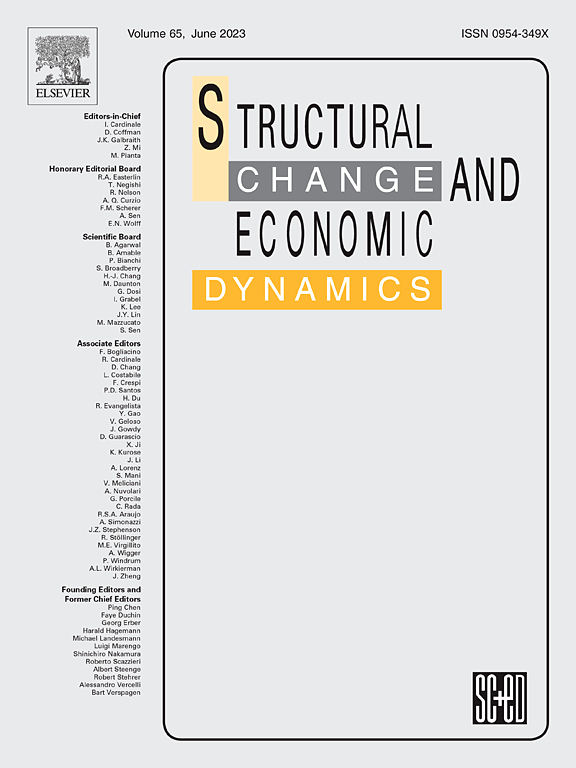Systemic, sectoral, and spatial propagation of CO₂ emissions: an inter-regional analysis for the Brazilian economy
IF 5.5
2区 经济学
Q1 ECONOMICS
引用次数: 0
Abstract
This study analyzes the propagation of CO₂ emissions in Brazil through sectoral, spatial, and systemic lenses, using interregional input-output data for 2011 and 2019. A regional typology is constructed based on trade flows and emission intensity relative to gross output. The results show that states in the South and Southeast, with more diversified economies, emit less CO₂ per unit of output. In contrast, emissions in the Central-North are mainly associated with the primary sector. Regions characterized by high emissions and low productive integration are concentrated in ecologically sensitive biomes such as the Amazon, Cerrado, and Atlantic Forest. Although the primary sector has declined in recent years, it remains central to their economic structure, while intermediate areas depend on emission-intensive activities. The growing integration of Brazil’s primary sector into global markets has reinforced these patterns. These findings highlight the sustainability challenges posed by a growth model reliant on land-use change in fragile ecosystems and enduring infrastructure constraints.
二氧化碳排放的系统性、部门性和空间传播:巴西经济的区域间分析
本研究利用2011年和2019年的区域间投入产出数据,从部门、空间和系统的角度分析了巴西二氧化碳排放的传播。基于贸易流量和相对于总产出的排放强度,构建了区域类型。结果表明,经济多元化程度较高的南部和东南部各州单位产出的二氧化碳排放量较少。相比之下,中北部的排放主要与初级部门有关。高排放和低生产力一体化的地区集中在生态敏感的生物群落,如亚马逊、塞拉多和大西洋森林。虽然初级部门近年来有所下降,但它仍然是其经济结构的中心,而中级部门则依赖于排放密集型活动。巴西初级部门日益融入全球市场,加强了这些模式。这些发现突出了脆弱生态系统中依赖土地利用变化和持久基础设施限制的增长模式所带来的可持续性挑战。
本文章由计算机程序翻译,如有差异,请以英文原文为准。
求助全文
约1分钟内获得全文
求助全文
来源期刊

Structural Change and Economic Dynamics
ECONOMICS-
CiteScore
9.60
自引率
4.90%
发文量
159
期刊介绍:
Structural Change and Economic Dynamics publishes articles about theoretical, applied and methodological aspects of structural change in economic systems. The journal publishes work analysing dynamics and structural breaks in economic, technological, behavioural and institutional patterns.
 求助内容:
求助内容: 应助结果提醒方式:
应助结果提醒方式:


